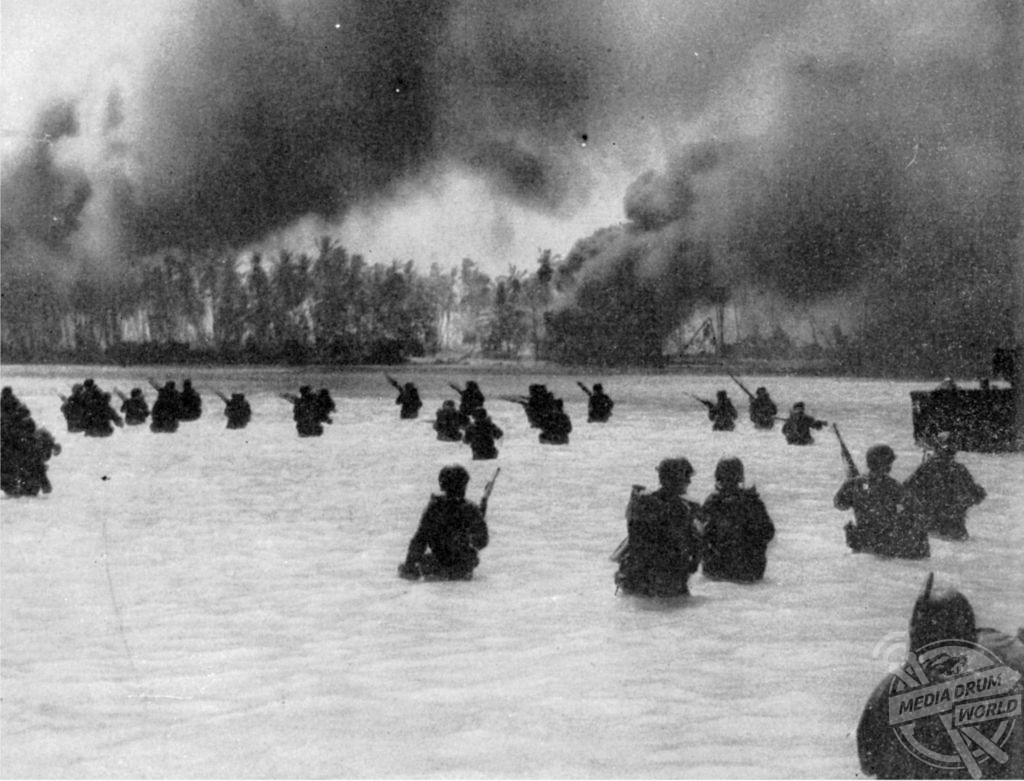
By Alex Jones
THE FULL horror facing soldiers in the Pacific Theatre has been laid bare in a harrowing new book.
Terrifying pictures of the brutal attacks on the Gilbert and Ellice Islands – now known as Kiribati and Tuvalu respectively – include a haunting image of a corpse strewn on a tropical beach, a photo capturing the fear and trepidation in the eyes of a wounded soldier under intense fire, and a festering Marine’s body being carried by his colleagues to his final resting place.
Other incredible images include a rare soldier’s perspective of wading to the shore under a hail of fire from entrenched Japanese soldiers, three soldiers being honoured at sea after succumbing to the injuries they sustained in battle, and two Japanese troops who took their own lives rather than face the ignominy of surrender.
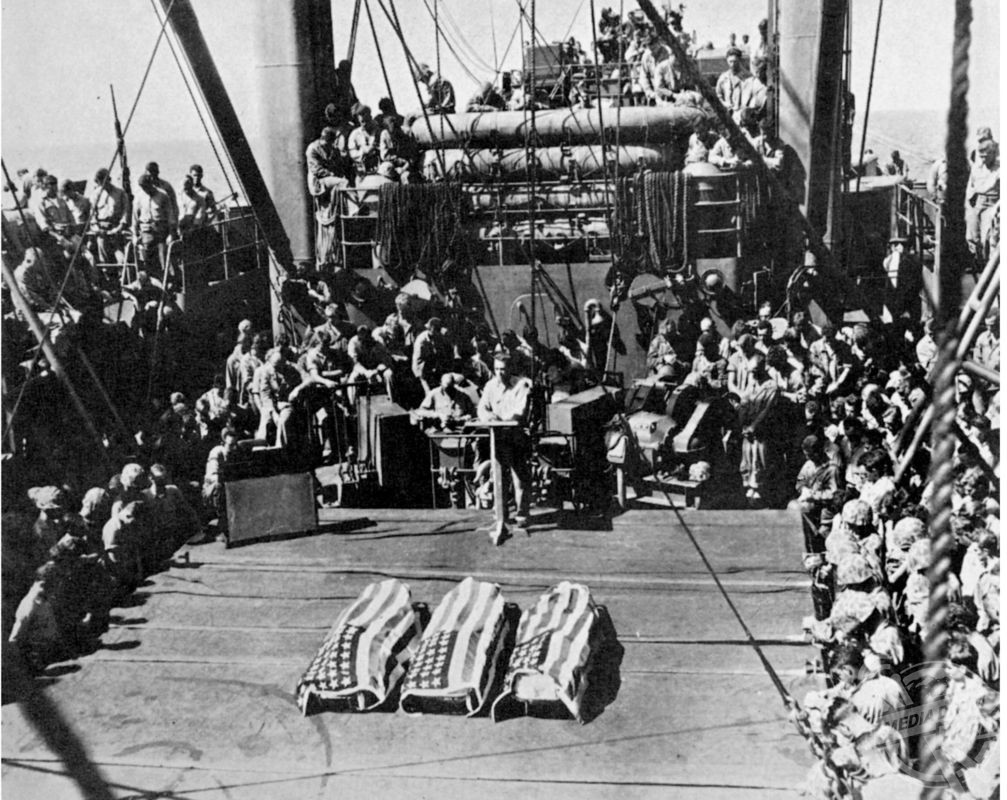
Historian Jim Moran’s new book The Gilbert And Ellice Islands: Pacific War: Rare Photographs From Wartime Archives offers an enthralling, chilling, and gruesome insight into what the American soldiers faced on their island hopping campaign, designed to beat back the Japanese forces one deadly battle at a time.
The Gilbert and Ellice Islands, part of the British Empire at the time, was a key battleground for the United States in the early stages of its war.
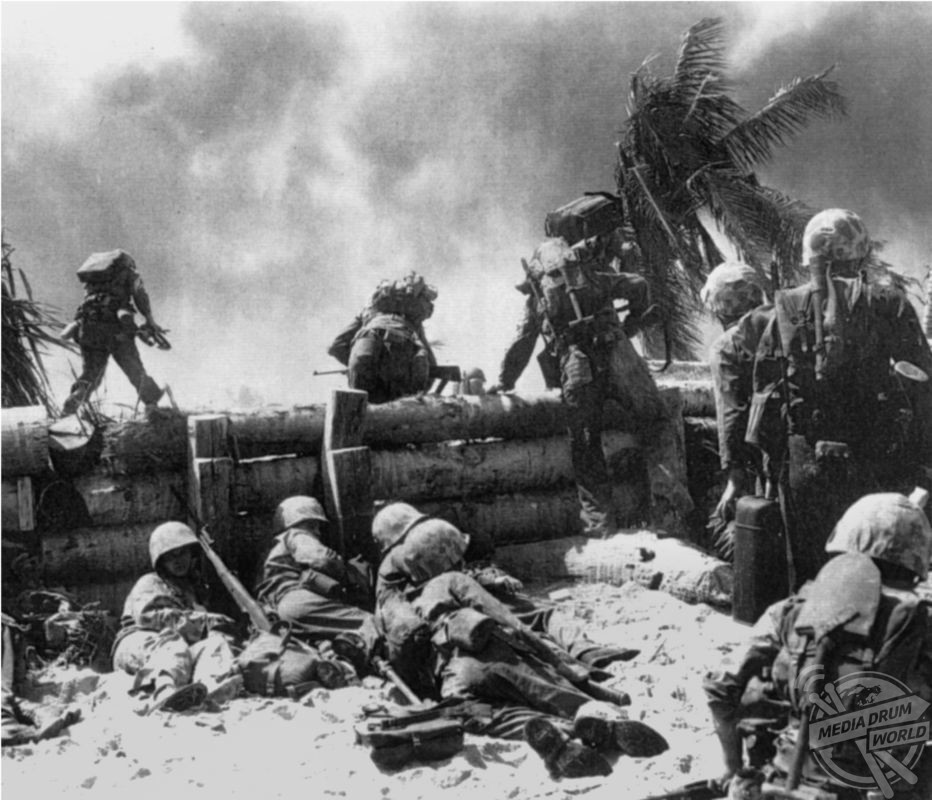
to the assaulting Marines on D-Day. Here groups and individual Marines go over the top to assault Japanese
emplacements with rifles, demolition charges and flame-throwers, while other Marines recover from the ordeal of
landing. Mediadrumimages/JimMoran/PenAndSwordBooks
“Days after the Japanese attack at Pearl Harbor, elements of the Japanese navy landed in the Gilbert Islands, in particular Makin, Tarawa and Apamama,” explained Moran.
“The initial occupation of these atoll islands was low-key, with a seaplane facility being built on Butaritari (Makin) but no serious defences. On 17 August 1942, Butaritari was attacked by elements of the US Marine 2nd Raider Battalion (Carlson’s Raiders), landing in rubber boats launched from two submarines that had transported the 200-plus Raiders from Pearl Harbor. The Raiders eliminated almost the entire forty-four-man garrison and destroyed two radio stations and the seaplane tender, as well as storage and supply facilities on the island, before returning to the submarines and back to Hawaii.
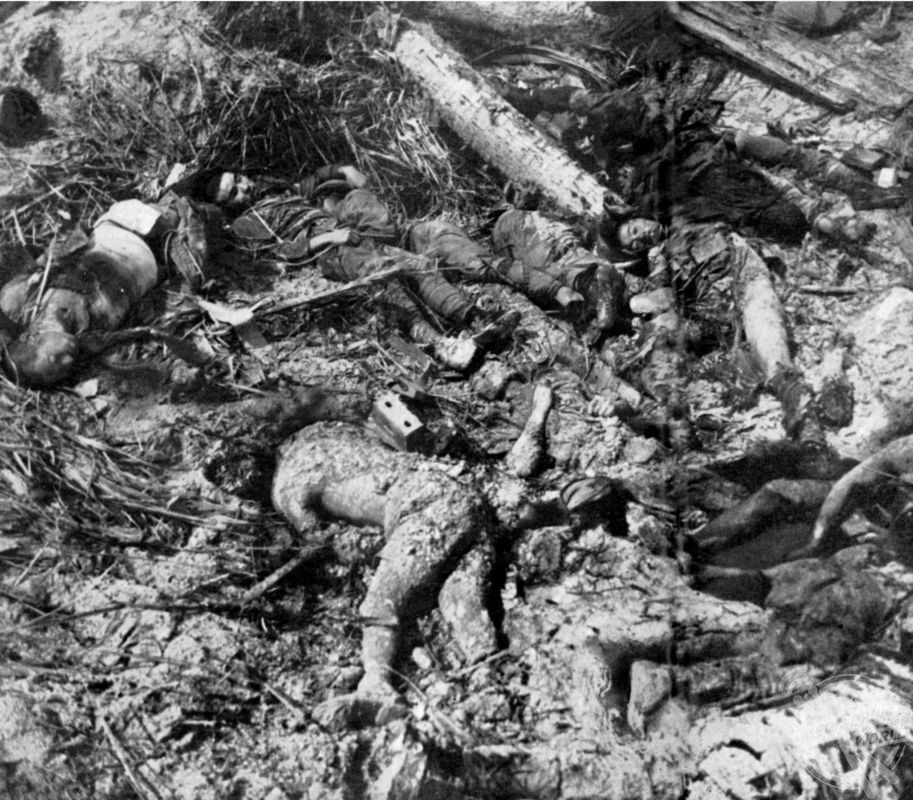
“The Makin Raid alerted the Japanese to the vulnerability of their outposts and work started in earnest to considerably increase the defences on, in particular, Makin,Tarawa and Apamama. Seaplane facilities were rebuilt on Makin, another seaplane facility was built on Apamama and an airfield was built on Betio (Tarawa). Defences were increased considerably, particularly on Betio, and garrison troops now numbered into the thousands.”
‘Island Hopping’ is the phrase given to the strategy employed by the United States to gain military bases and secure the many small islands in the Pacific. The US troops targeted the islands that were not as strongly defended by the Japanese. They took control of those islands, and quickly constructed landing strips and small military bases. Then they proceeded to attack other islands from the bases they had established. Slowly the US army moved closer to Japan, taking control of many of the surrounding islands.
After the initial skirmish in 1942, another far more bloody assault was to take place on the tropical islands, now considered a priority in Japan’s defensive strategy – a savage battle which would claim the lives of 4,690 soldiers fighting under the Japanese banner and 3,301 US Marine Corps causalities, including nearly 1,000 dead.
“In 1943, assaults on the Gilbert Islands by US forces (Operation GALVANIC) were given the ‘green light’; in particular the taking of Tarawa (Betio), Apamama and Makin by US army and Marine troops,” continued Moran, whose expertise in the Pacific War has seem him advise on major tv and film projects, including HBO’s award-winning The Pacific.
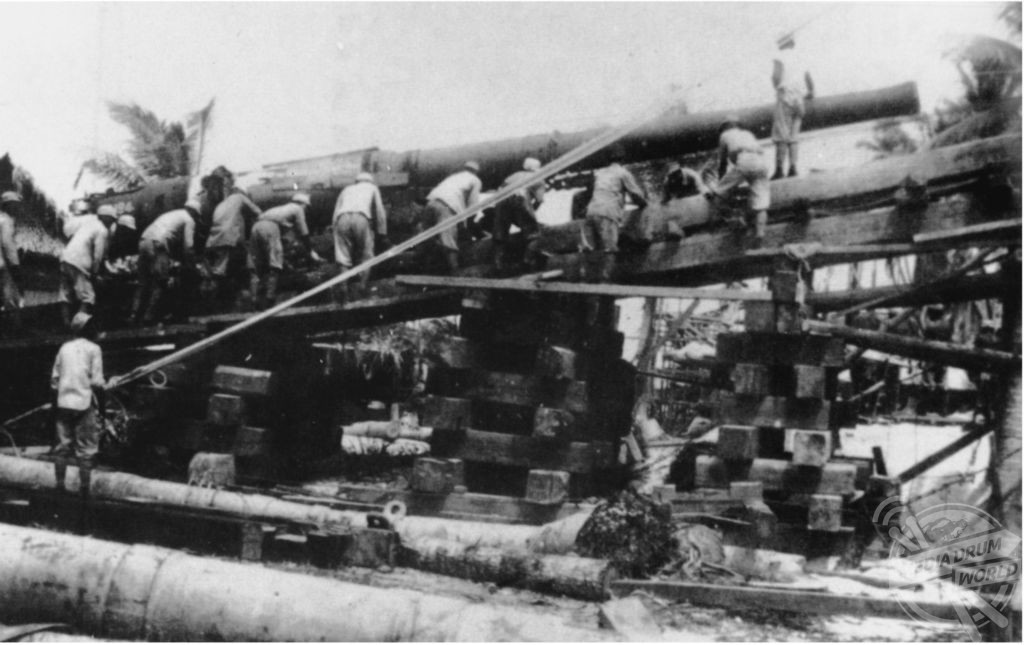
by the Japanese in 1905 during their war with Russia. Mediadrumimages/JimMoran/PenAndSwordBooks
“D-Day was set for 20 November 1943. The taking of these three islands was very costly in human lives, both US and Japanese; all three Japanese garrisons were eliminated almost to a man and US casualties were also severe, causing much concern back home in the US.”
The fight for the island was horrendous for all involved. This snippet from the assault on one of the island’s fortified beaches hints at the despair the soldiers must have felt in the heat of battle, especially after their landing craft got caught on a coral reef.
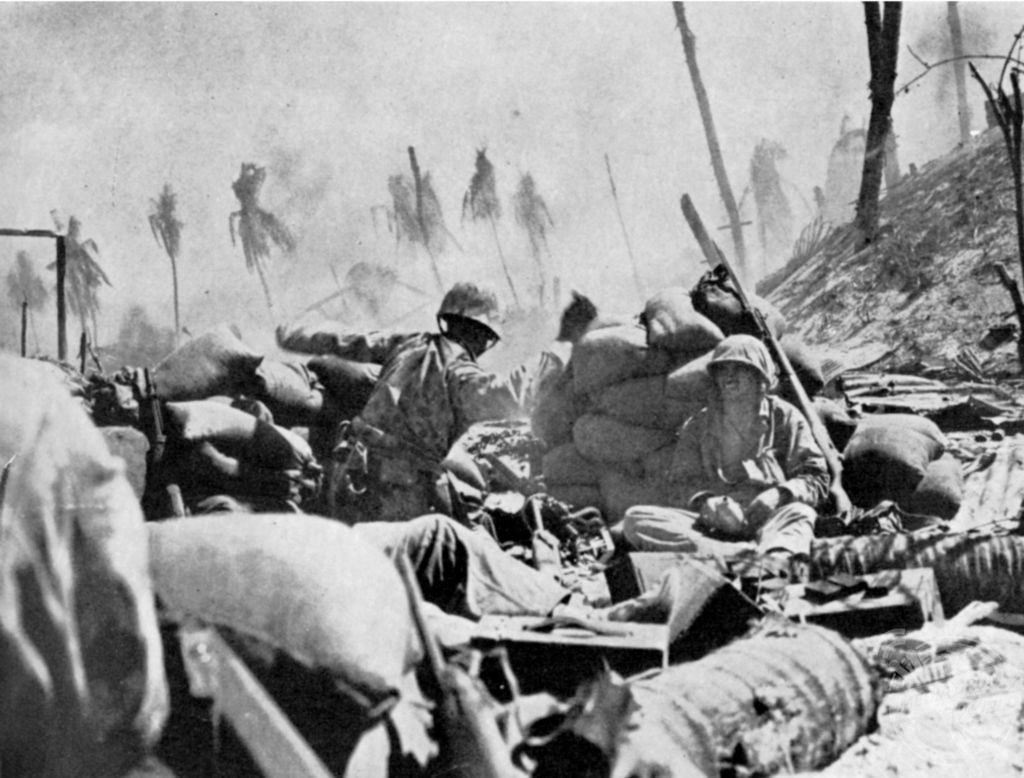
“None of the boats could get over the barrier reef and few Amtracs (sea-going tanks) were returning from the beach, so the men were faced with no other alternative but to climb out of their boats and wade to shore under murderous machine-gun fire – reminiscent of the First World War,” writes Moran.
“Lieutenant Colonel Amey had commandeered an Amtrac and was heading into the beachhead when the Amtrac became entangled in a barbed-wire barricade. Unable to move, Amey and his HQ staff went over the side to wade the last 200 yards to the beach. The gunfire was so intense that they had to take cover alongside the stranded Amtrac and wait for a lull in the hail of Japanese fire coming from the sea wall. Sensing an easing of the fire, Amey and his staff headed for the beach on hands and knees, presenting as small a target as possible. Amey stood up and, shouting ‘Come on, these bastards can’t stop us’, headed for the beach. As he stood he was hit by machine-gun fire and fell, dead, into the shallow water.”
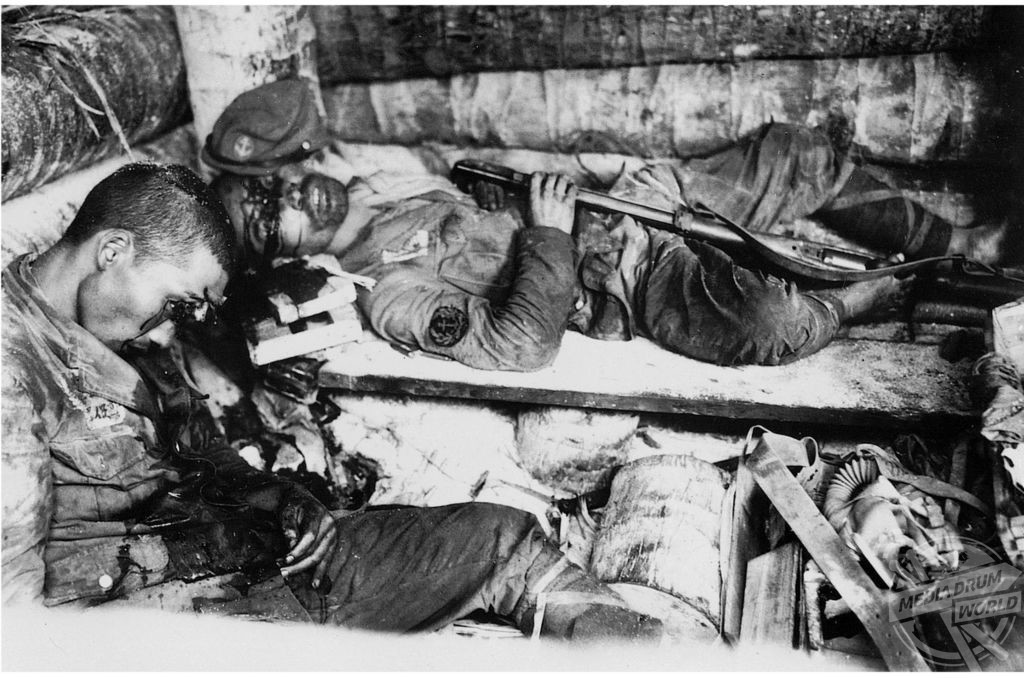
their rifle to the forehead and pulling the trigger with their toe. Mediadrumimages/JimMoran/PenAndSwordBooks
Simultaneously, another assault was experiencing equally dire conditions.
“One unit were forced to wade 700 yards through shallow water against murderous fire from numerous Japanese emplacements with no back up,” added Moran.
“Comrades could only watch in horror as their fellow Marines waded in, falling by the hundreds. The fourth wave of troops were told to return to boats, and shortly afterwards the 8th Marines Regimental Commander, Colonel Hall, ordered ‘Land no more troops.’”
Fighting on land was no less intense than at sea.
“After a brief but bloody hand-to-hand fight ensued on 22 November, but after one hour the Japanese retired,” continued the author.
“At 03.00 a much larger attack by several hundred Japanese, charging and shouting ‘Marines, you die!’ occurred to the battalion’s front. Naval gunfire was called in on the east end of Betio and Marine artillery was called in as close as 50 yards in front of Jones’s men. Dawn revealed more than 200 dead Japanese in front of the Marine lines, with a further 125 mangled bodies lying further east, victims of the naval gunfire. Jones’s 1/6 had suffered 45 dead and 138 wounded.”
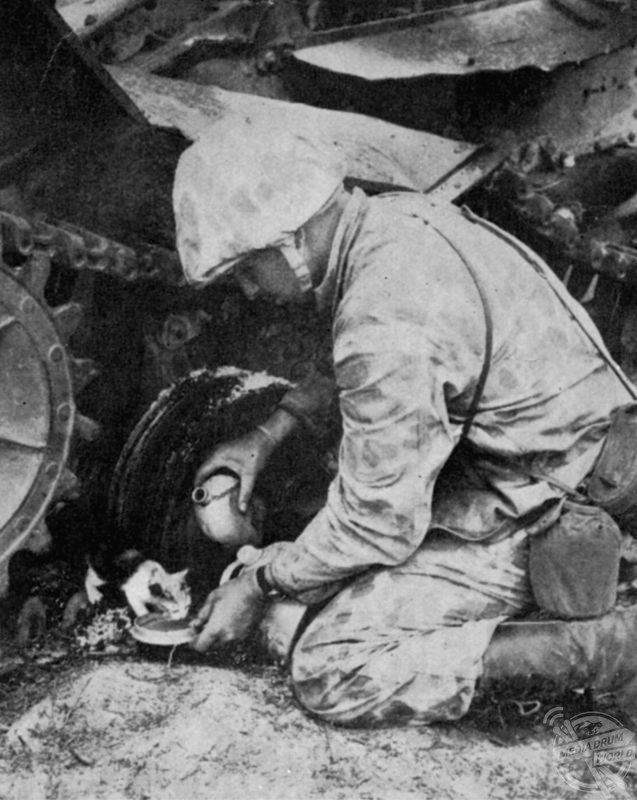
Flamethrowers, grenades, booby traps, and guerrilla tactics were all utilised by both sides as the battle reached it bloody climax, which saw an eventual United States victory. Just 17 Japanese prisoners of war were captured. A further 129 Korean labourers, forced to fight for Japan, were also interned.
“Following the islands being secured, US construction and garrison troops built airstrips on Tarawa and Makin but, due to the speed of the US advance across the Pacific, these facilities played little part in further operations in the Pacific,” added The Gilbert And Ellice Islands author.
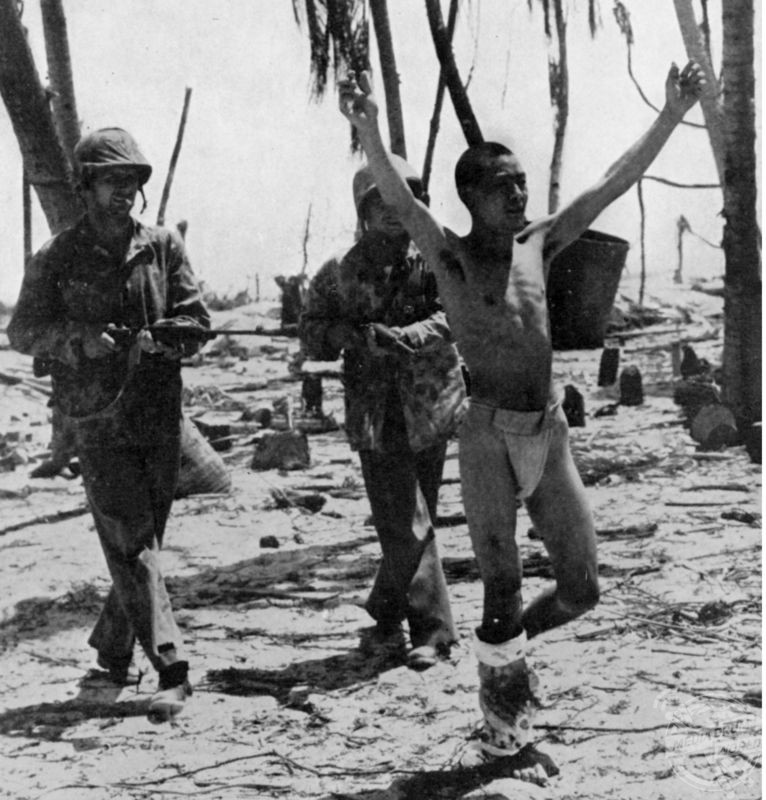
harbouring a weapon or grenade. Only very few Japanese troops were taken alive, the remaining PoWs being Korean
forced labour who took little part in the fighting. Mediadrumimages/JimMoran/PenAndSwordBooks
“Following the end of hostilities in the Pacific, the Gilbert and Ellice Islands were returned to British rule, finally gaining independence in 1979.”
Ultimately, the island hopping campaign was successful. It allowed the US to gain control over sufficient islands in the Pacific to get close enough to Japan to launch a mainland invasion. However, the island hopping took a long time and was very costly; even after war was close to ending in Europe it appeared that the war might continue indefinitely in the Pacific. Fearing a drawn out war with many more casualties, the US made plans to end the war quickly and force Japan’s surrender. They achieved this with the World’s first Atomic bombs.






